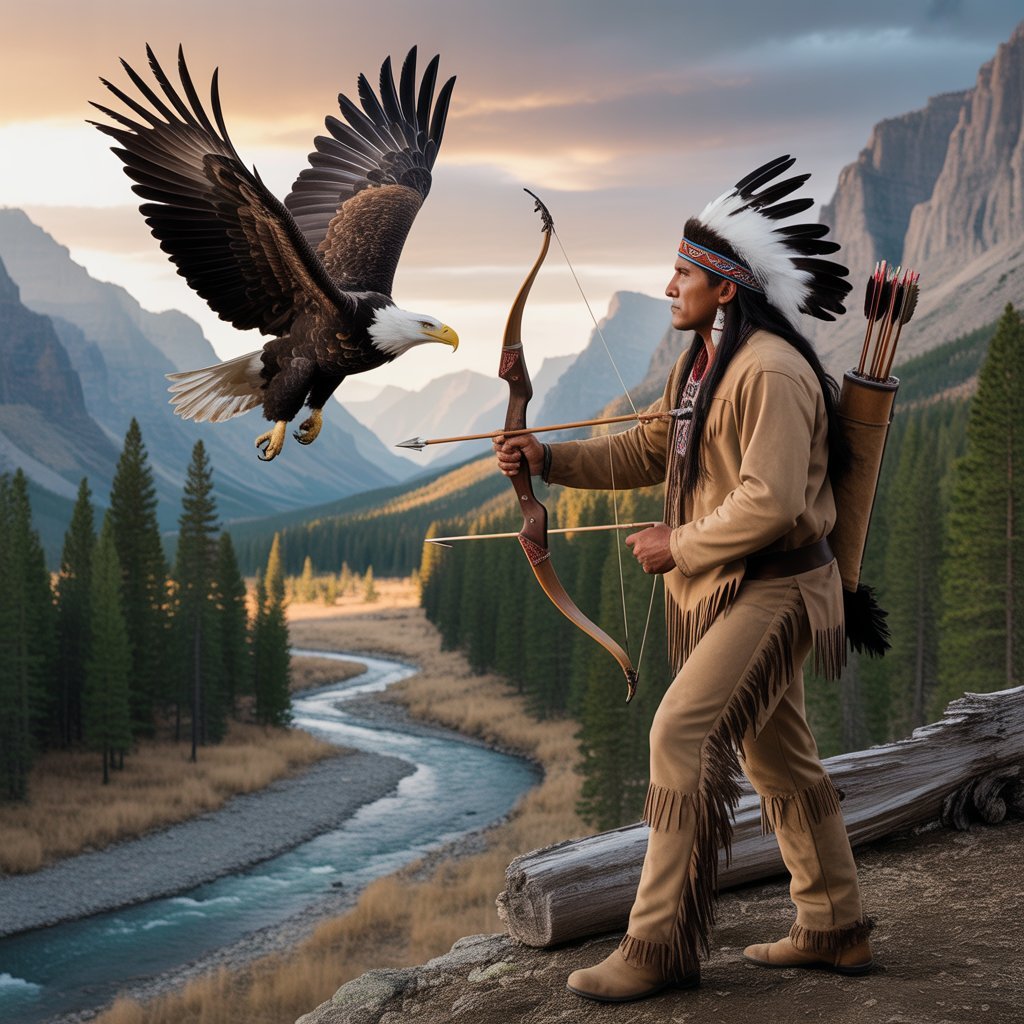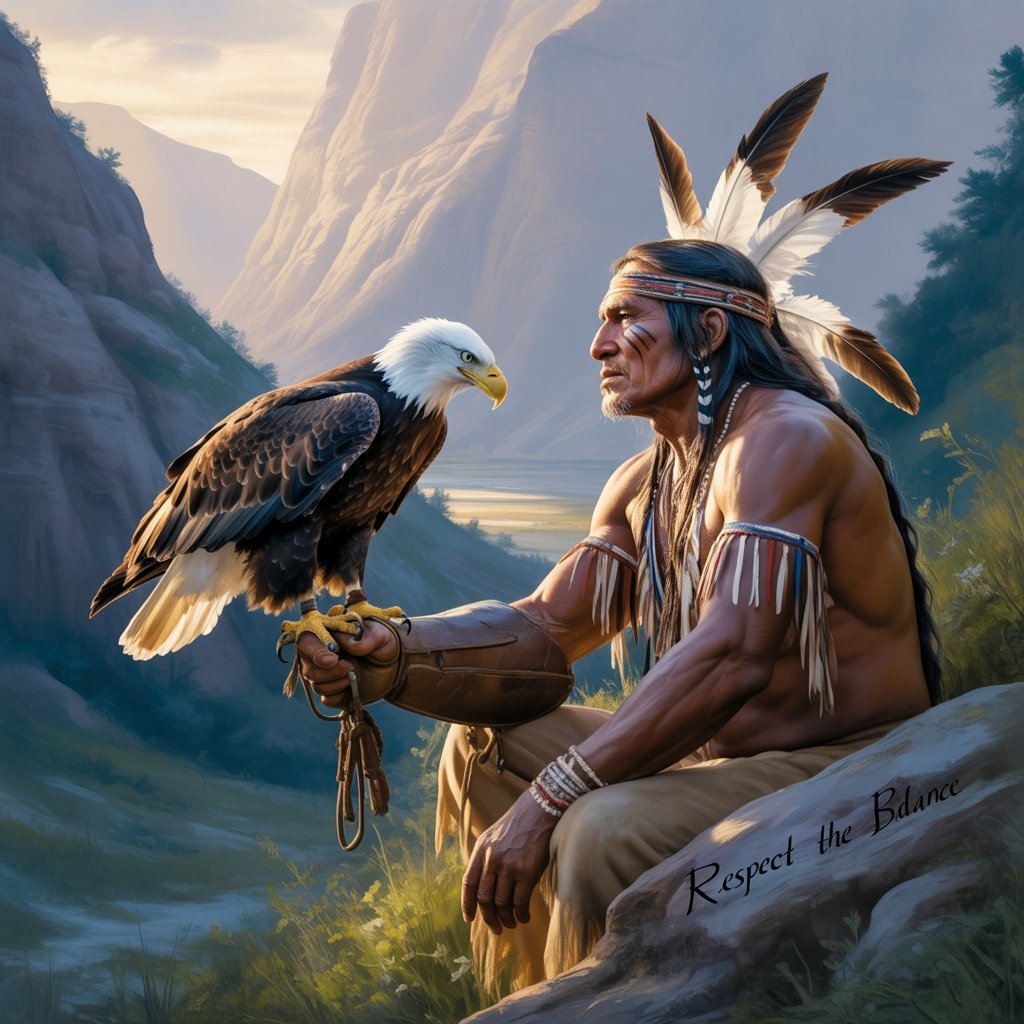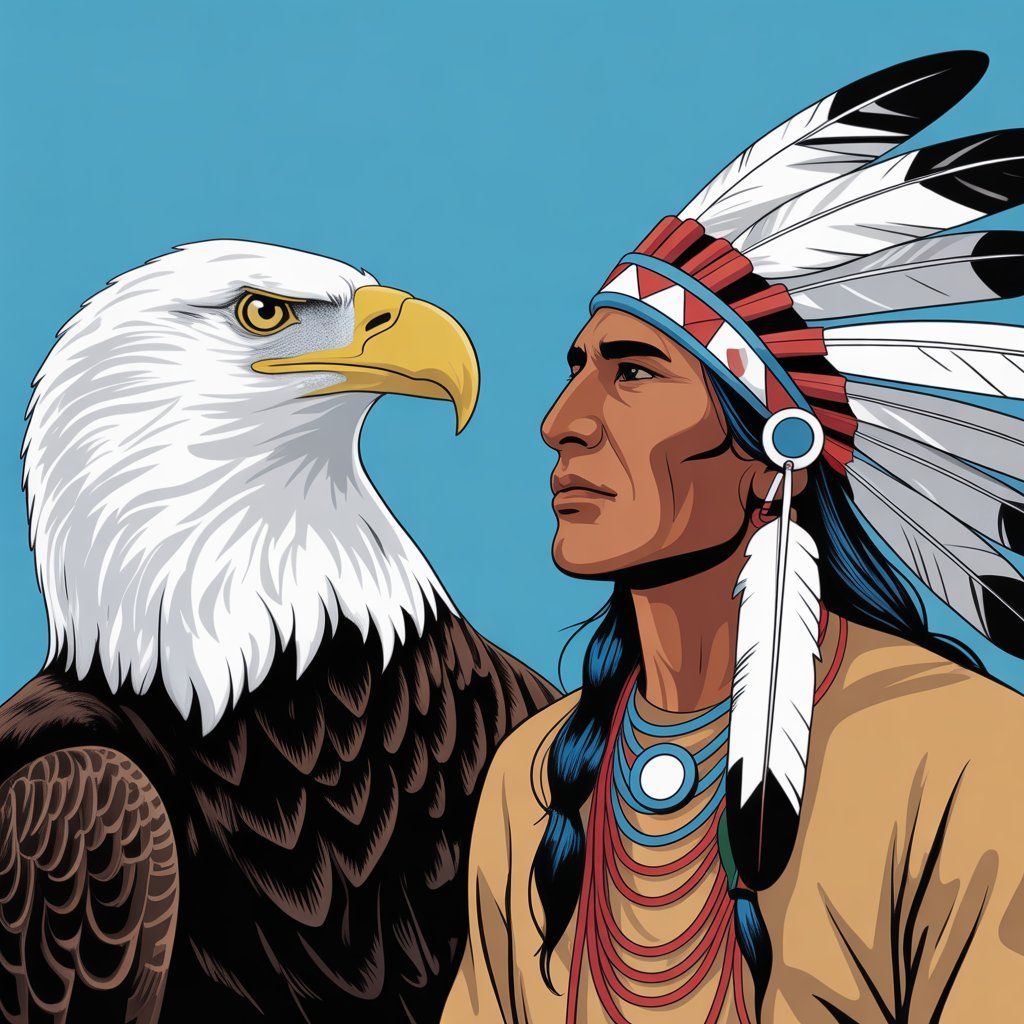More Than a Bird: The Eagle’s Sacred Place in Native American Culture
Across the vast landscapes of North America, the sight of an eagle soaring against an endless sky evokes a powerful sense of awe and freedom. While many nations have adopted this magnificent bird as a symbol of power and authority, for the diverse Indigenous peoples of the continent, the eagle’s significance is woven far deeper into the fabric of culture, spirituality, and daily life. It is not merely a symbol; it is a relative, a messenger, and a direct connection to the divine.
To understand the eagle’s role, we must first step away from a purely secular worldview and enter a perspective where the natural and spiritual worlds are intrinsically linked. In many Native cultures, the eagle is revered as the creature that flies highest, touching the face of the sky and traveling closer to the Creator, or Great Spirit, than any other living being. This unique physical ability gives it a profound spiritual purpose.
A Messenger Between Worlds 🕊️
The primary role of the eagle is that of a divine messenger. It is believed to carry the prayers of humans from the earthly realm up to the spirit world. When a person holds an eagle feather or offers a prayer during a ceremony, there is a deeply held belief that the eagle’s spirit accepts that prayer and delivers it directly to the Creator.
This connection is a two-way street. Just as it carries messages up, the eagle is also believed to bring answers, blessings, and visions down from the Creator to the people. Its appearance at a significant moment can be interpreted as a sign, a confirmation, or a piece of divine guidance. For this reason, the eagle represents a sacred conduit—a living, breathing link that bridges the gap between humanity and the heavens. It is the embodiment of effective prayer, a symbol that one’s voice is being heard in the highest of places.

The Embodiment of Power and Vision
The eagle’s physical attributes are direct metaphors for the virtues most admired in people, especially leaders and warriors.
- Strength and Courage: The eagle is a formidable predator. Its strength to carry its prey, its powerful wings that command the wind, and its unwavering courage are seen as ideals to which a person should aspire. A warrior who demonstrated great bravery in protecting their people was often associated with the eagle’s spirit.
- Vision and Clarity: An eagle is renowned for its extraordinary eyesight. It can spot its prey from miles away, seeing the world with a clarity and perspective that is impossible from the ground. This translates into the human virtue of wisdom and foresight. A leader with “eagle vision” is someone who can see beyond immediate challenges, anticipate future events, and guide their people with clarity and truth. They can see the “big picture” that others might miss in the turmoil of daily life.
- Freedom and Sovereignty: The eagle soars, unbound by earthly tethers. It moves between the earth and sky with an innate freedom that has long symbolized independence and the self-governing spirit of Native nations.
The Sacred Feather: An Emblem of Honor
Nowhere is the eagle’s sacredness more evident than in the reverence shown for its feathers. An eagle feather is never “just a feather.” It is a sacred object of the highest honor, and in most traditional cultures, it cannot be bought, sold, or simply found and kept. It must be earned.
Feathers were, and still are, awarded to individuals for significant acts of courage, leadership, or service to their community. For a warrior, it might be for an act of bravery in battle. For a community leader, it could be for a lifetime of wise decisions. For a modern veteran returning from service, being gifted an eagle feather is one of the highest honors their community can bestow, connecting their sacrifice to the timeless tradition of the warrior.
These feathers are used in the most sacred ceremonies. They are held during prayer, used in smudging fans to cleanse a person’s spirit with sage smoke, and worn as part of ceremonial regalia. A full eagle-feather headdress, often seen in depictions of Plains tribes, is not a generic accessory. Each of its many feathers represents a specific, honored deed, and the headdress as a whole tells the story of a great leader’s life and service.
The spiritual and cultural importance of these feathers is so profound that it is protected by U.S. federal law. The Bald and Golden Eagle Protection Act makes it illegal for most people to possess any part of an eagle, but it includes an exception for members of federally recognized Native American tribes for use in their religious and cultural ceremonies. This legal recognition underscores that this is not a historical artifact but a living, breathing spiritual practice.
A Living Tradition
The eagle’s influence permeates oral traditions, songs, and dances. The Eagle Dance, performed by many Pueblo and Plains communities, is a stunningly beautiful ceremony where dancers mimic the bird’s movements. It is a dance of healing, strength, and prayer, bringing the eagle’s spirit and power down to the people.
From the thunderbird, a powerful eagle-like spirit being that creates thunder and lightning, to the countless stories used to teach children about wisdom and honor, the eagle remains a central figure. It is a constant reminder of the virtues to strive for and the spiritual world that coexists with our own. The eagle inspires people to look up, both literally and figuratively—to seek a higher perspective, to act with courage, and to live in a way that honors the connection between all living things and the Creator.

Key Takeaways
- The Divine Messenger: The eagle is revered because it flies highest, carrying prayers to the Creator and bringing messages back to Earth.
- Symbol of Virtue: It embodies the core values of strength, courage, wisdom, and freedom, serving as a role model for leaders and warriors.
- A Higher Perspective: Its incredible eyesight symbolizes “eagle vision”—the ability to see with clarity, foresight, and truth beyond immediate problems.
- Feathers are Earned, Not Given: Eagle feathers are sacred objects representing the highest honor, awarded for significant acts of service and bravery. Their use is a central part of living spiritual traditions.
- A Living Culture: The eagle’s significance is not a thing of the past; it is actively present in modern ceremonies, the honoring of veterans, and legally protected cultural practices.
